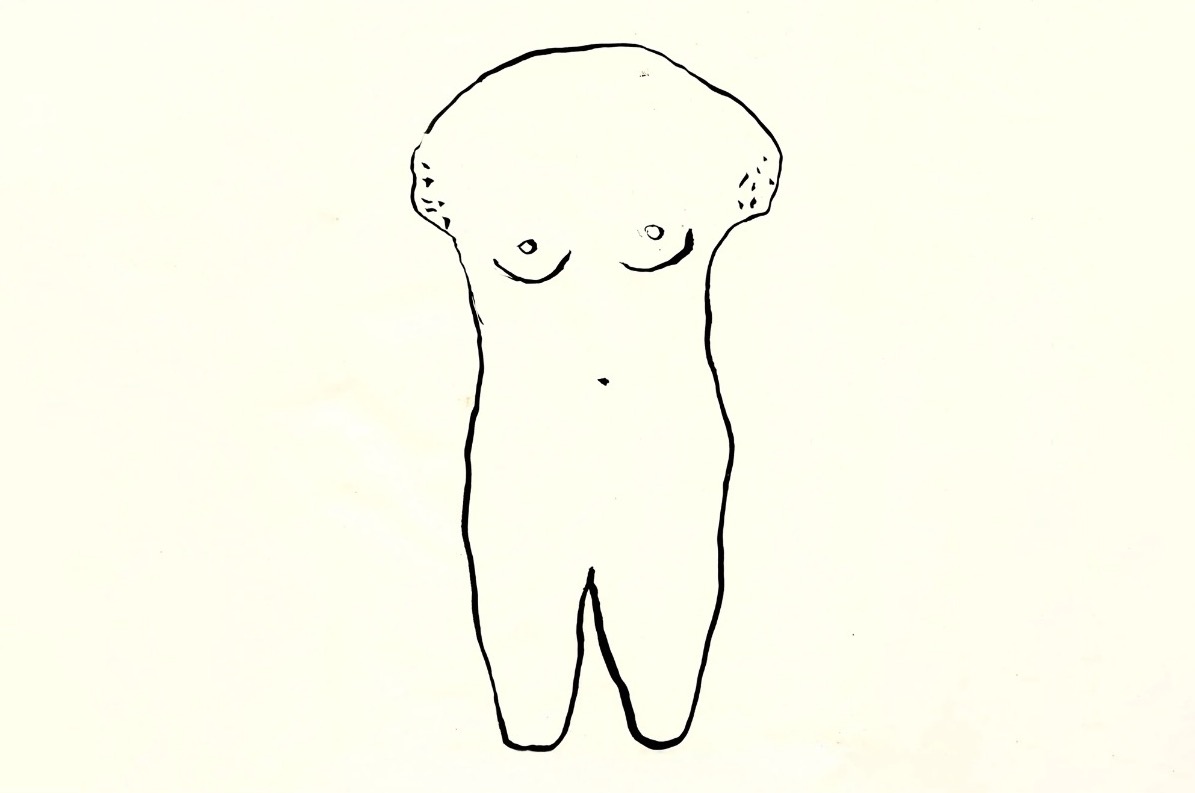“O image of mine, may you endure for the sake of my name, that everyone may love you, that people may stretch out their arms for me, bearing rich bouquets… You are here for me, as a shelter. You are my true form.”
This is what Panehsy, Royal Treasurer from Memphis, under Pharaoh Ramses II writes more than three thousand years ago, in his dedication to the statue that will represent him after his death. It can be found in the section on Ancient Egypt within the British Museum. The text reads like a love song to a statue. It has, of a love song, that total identification with the object of love and at the same time the hope that it will outlive us forever.
True Form interrogates what goes on between us and the images we create or surround ourselves with. The paintings come from life drawings of statuettes that I saw in different archeological museums – in London, in Sicily, in Turin, in Bologna. I made these drawings as I was standing in front of the statuettes, and then I translated them in even simpler lines. A translation of a translation, stripped down to the bare minimum.
When I first read Panehsy’s dedication I was shocked and didn’t understand why exactly. Still now, every time I read that last sentence, “You are my true form”, I feel knocked out. Somehow Panehsy has touched on a concept that lies at the core of my relationship with art. It’s one of those sentences that Paul Valéry would have described as “poetic”, as it keeps ringing without ever exhausting itself. This idea of a true form holds something magic, for really if you think about it, a true form does not exist outside of the original – Paneshy’s body, in this instance. When he says you are my true form he implies that the statue is a perfect translation of him into stone, in fact, the statue might be truer to him than his own body. And here is where I fall. For an ex-translator like me there is something paradoxical in this; for any translator knows there is no such thing as a perfect translation, a true translation. It’s a wish. It can only exist in our belief. Art then is a game of make-believe. I am speaking to the image I created, I say you are me, I want you to be beautiful and loved in my place; I want something that is impossible. What Panehsy is really touching with this single, simplest sentence, is essential to art. He is talking about absence; the statue he speaks to consoles him from the unbearable idea of not being there one day. The statue gives him the possibility to pretend that everything he wants is still there. Nobody has died, there is only presence. But in the paradox offered by Panehsy there lies another question: if the work of art is a translation of an original, it’s rather easy to see how figuration works, i.e. a statue can be a translation of a human body, but what if I work in abstraction? What is the original I’m referring to then? A circle is a true form of what? A grid is a true form of what? What is the original lying behind all the art that we make? The absence that my artwork is making presence in its game of make-believe?
In the Annexe this meditation moves into abstraction and colour, here too trying to strip down everything as much as possible. It is an immersive environment that puts us directly inside the work, barefooted. This is an open invitation to abandon all narrative efforts and simply perceive primary colour and shape.
– Adelaide Cioni, 2024
| Duration | 23 May 2024 - 22 June 2024 |
| Times | Wednesday – Saturday: 12–6pm or by appointment |
| Cost | Free |
| Venue | The Approach |
| Address | 47 Approach Rd, London, E2 9LY |
| Contact | 020 8983 3878 / info@theapproach.co.uk / www.theapproach.co.uk |

